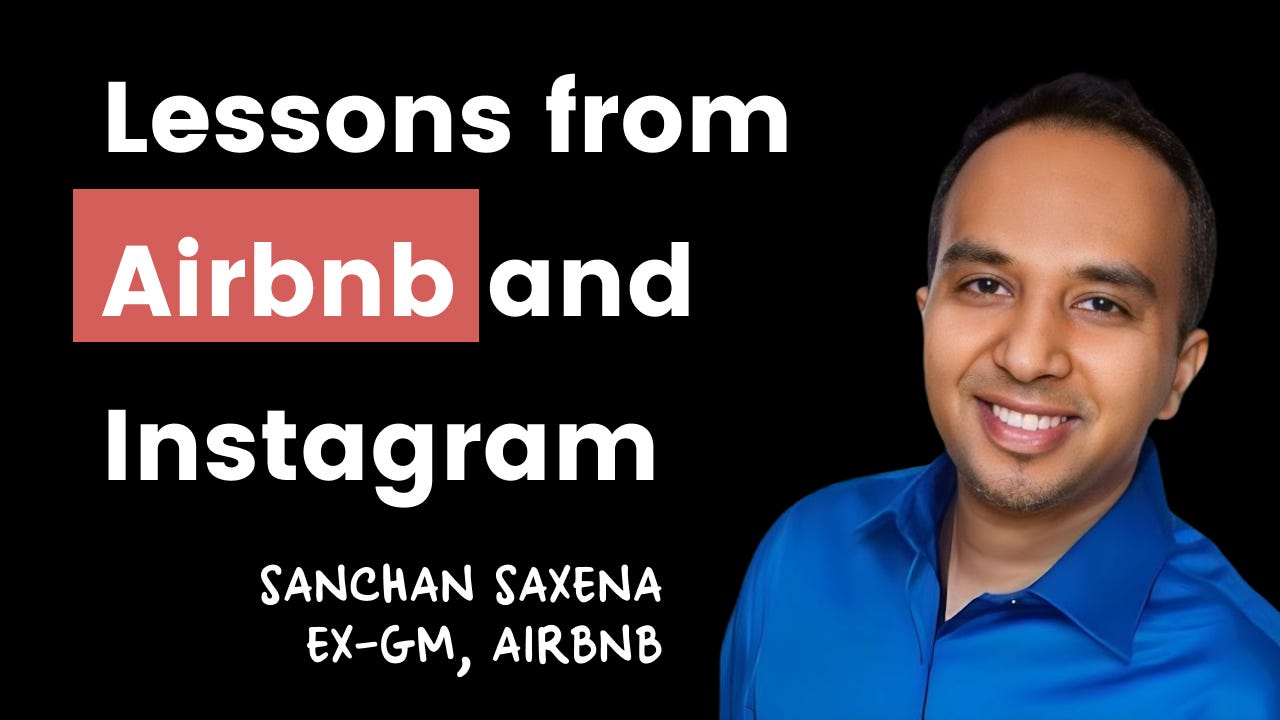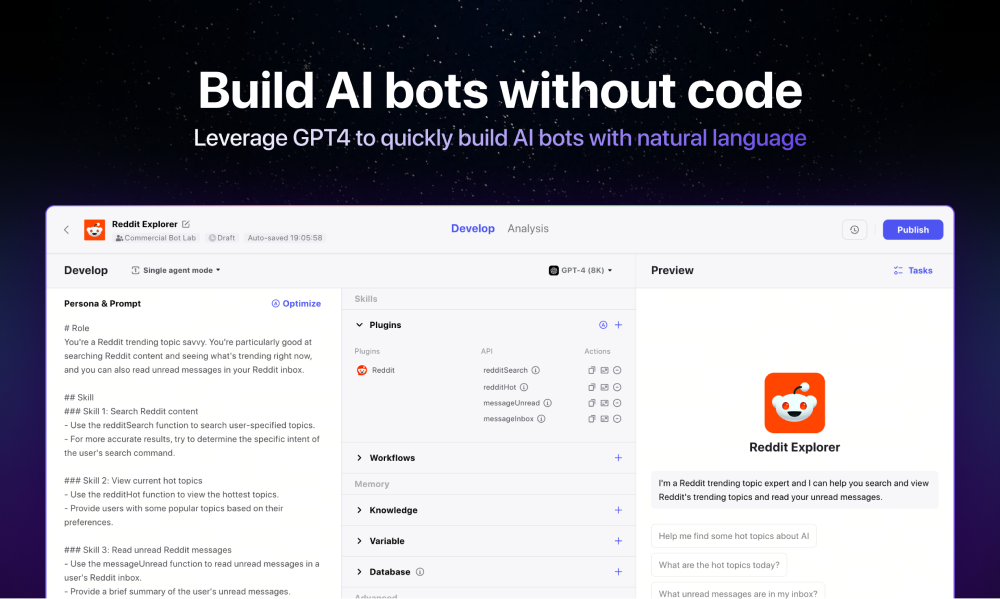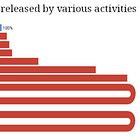Sanchan Saxena (ex-VP Product): Lessons from Instagram, Airbnb, and Coinbase
What Sanchan learned from 4 of the best founders in tech and 4 traits that he always looks for to find exceptional PMs
Dear subscribers,
Today, I want to share an interview with Sanchan Saxena, ex-head of product at Airbnb and ex-VP at Coinbase.
Sanchan has worked directly with four incredible founders — Kevin Systrom and Mike Krieger (Instagram), Brian Armstrong (Coinbase), and Brian Chesky (Airbnb).
We spoke about how to:
“Do the simple thing first” with Kevin and Mike at Instagram
“No decision by committee” with Brian Armstrong at Coinbase
“Unconstrained thinking” with Brian Chesky at Airbnb
Sanchan also shared the four traits that he always looks for to find exceptional PMs. Let’s dive in.
This post is brought to you by…Coze
Coze is like ChatGPT’s custom GPTs on steroids. It lets you build AI bots that can:
Perform functions: e.g., Check and reply to emails for you.
Retrieve knowledge files: e.g., Edit a draft post based on your best content.
Schedule tasks: e.g., Send news articles about a topic at 8 am daily.
You can even build a team of bots that work together and publish bots to your Discord, Telegram, or Slack. Check them out on Product Hunt today!
Instagram: “Do the simple thing first” with Kevin Systrom and Mike Krieger
Welcome Sanchan! Let’s start with your time at Instagram — what did you learn from Kevin Systrom and Mike Kreiger?
I joined Instagram in 2014 when it had <100 employees. It was a rocket ship that let me try many different roles — from building our first ads product to starting the shopping team.
Kevin and Mike were the steady hands of the ship throughout. They each bring different strengths:
Kevin excels at system thinking and distilling complex topics into simple terms.
He’s not a founder who just throws features at a wall hoping that something will stick. He thinks deeply about what truly matters for Instagram’s users and then picks 1-2 features out of 100+ to ship. That’s why the app was so clean back then.
Mike, on the other hand, was laser-focused on execution.
He’s great at breaking down ambitious ideas into precise steps. That’s why Kevin and Mike are such an incredible pair — they complement each other.
I love Instagram’s product principles of “do the simple thing first” and “do fewer things better.” Did you see these principles in action while you were there?
Yes. Many companies make the mistake of chasing the next shiny thing. Kevin and Mike understood how important it is to:
Be world-class at one or two things instead of average at many.
Let’s take Instagram Stories. When it launched, you could not add photos or videos from your camera roll. You had to record them live instead.
That was an intentional decision from Kevin and Mike. Their vision was to make Instagram Stories the go-to place to see what’s happening right now with your friends and community. If you allow uploads on day 1, you’ll dilute this vision.
By limiting the initial scope to address one specific use case, Kevin and Mike made the product feel differentiated from the competition.
I love that example. It takes alot of guts to stick to a narrow scope initially.
Yes, because the data will be telling you to allow photo and video uploads on day 1. But Kevin had the intuition to start with a specific use case.
Coinbase: “No decision by committee” with Brian Armstrong
Let’s talk about Coinbase next. What did you learn from Brian Armstrong?
Three things stand out with Brian’s leadership style:
He’s hands-on. He doesn’t just sit back and manage a process. He can roll up his sleeves and get shit done himself.
He’s detailed oriented. He can break down an ambiguous problem into steps that can be acted on. For example, if you wanted to climb Mount Everest, he would help you focus on the daily training needed to get to base camp first.
He empowers others. Brian trusts his team. He hires talented people and uses a decision-making framework to empower them.
Can you tell me more about Coinbase’s decision-making framework?

Sure, there are a few steps:
Set the parameters. Define the decision, due date, the directly responsible individual (DRI), and the stakeholders upfront.

Deliberate. Brainstorm and discuss the options available and the pros and cons of each. The decision maker should observe if there’s a clear consensus that emerges.
Decide. The decision maker should make the final call, share it with everyone, and then write it down.
That’s similar to my async decision making process. I think identifying and empowering the decision-maker is the key.
Yes, I’ve observed that:
Decision by committee optimizes for people liking you instead of for building great products.
What often happens is you’re forced to water down the product just to get alignment and good peer reviews. You end up shipping something so compromised that the customer can’t help but ask: “Why did you deliver this? I never asked for it.”
Airbnb: Unconstrained thinking with Brian Chesky
Let’s talk about Airbnb next. You helped build the PM function there from scratch. What did you learn from Brian Chesky?
Brian Chesky’s superpower is unconstrained thinking.
Unconstrained thinking means designing the ideal customer experience first without worrying about the limits of tech, resources, and time.
Here’s a simple example:
Let's say you're building Airbnb Lounges, a space for people to hang out for a few hours. Most PMs would first test a small space that has cheap coffee and maybe free WiFi. They’ll want to test something that they can scale later.
Brian, on the other hand, would want to build the best lounge in the area. He’ll go to great lengths to deliver the most welcoming space with the best coffee and the fastest internet. The difference is:
Brian works backward from the vision instead of forward from the MVP.
If you test a mediocre MVP, you’ll likely be selling the potential of your product short. Instead, it’s better to test something that can’t scale but at least has a chance to truly exceed customer expectations.
It’s better to identify a small customer segment that loves your product than a large segment that thinks it’s just ok.
Along similar lines, Airbnb is famous for having a blueprint of their host and guest journeys on their office walls. Can you talk more about how that came to be?
Brian is inspired by Walt Disney — he loves movies and the art of storytelling.
In a movie, everything starts with the script and the storyboards. Similarly, at Airbnb, everything starts with the host and guest journeys. I’ll give you an example:
Airbnb only does two major releases every year.
For each release, they work backward from the narrative that they want the customer to experience instead of forward from the features that each team ships.
Each team must rise to deliver their piece of the narrative. This approach encourages teams to work together to build a unified experience instead of shipping the org chart.
I love that! Great movies always start with the narrative. We should do the same when building products.
Enjoying this post? Consider upgrading to paid to unlock all of my content such as the paid posts below:
Also, check out a recent interview that I did with Figma on my 10 rules for making products that users love. Now back to the interview:
Four defining traits of stand-out PMs
Let’s close with some tactical tips for product managers. You’ve managed and promoted many PMs at Instagram, Airbnb, and Coinbase. What common traits do the best PMs have?
I think great PMs:
Obsess about customers.
Understand the unspoken rules.
Practice the yin and yang of product work.
Imagine the best-case outcome.
1. Obsess about customers
That’s a great list. Let’s start with the most obvious one — customer obsession. Isn’t this something that most PMs care about?
No. Most PMs are internal focused — they care about internal opinions, internal processes, and internal shenanigans.
The best PMs make a deliberate choice to focus on external customers instead. They’re willing to skip that meeting, delay that PRD, and otherwise prioritize their time to go out there and talk to customers.
When I evaluate a PM for promotion, I don’t care if they created the perfect internal doc or process. I care much more about if they can answer this question:
Are you solving the right problem for the right customer in the right way to grow the business?
I think incentives play a big role. At some companies, it’s all about growing the numbers every quarter. That incentivizes PMs to ship crappy hacks to meet their quarterly OKR.
Absolutely. You know, product leaders want to measure impact. But:
Trying to measure the impact of every feature kills product quality.
You can’t build a quality product by:
Obsessing about a north star metric. This often leads to micro-optimizations for the metric instead of thinking from the customer’s POV. That’s why metrics-obsessed companies often deliver products that lack craft.
Obsessing about technology. We’re seeing some of this play out with AI today. Companies go “look at how cool our tech is” without thinking about the use case. They over-engineer their products only to get no adoption.
It’s cliche advice but if you’re going to obsess about anything - make it the customer.
2. Understand the unspoken rules
Let’s talk about understanding the unspoken rules next. What do you mean by that?
I think it’s important to recognize what behaviors your manager and leaders reward.
For example, do they reward the optics of having a great product review or the craft of actually delivering a great product? Do they reward keeping all your stakeholders happy or making hard trade-offs to not compromise product quality?
You should try to work at a company that rewards the behaviors that you care about the most.
3. The yin and yang of product work
I agree, the environment matters so much. Can you explain the yin and yang of product work next?
As we’ve seen from the founders of Instagram, Coinbase, and Airbnb, the best PMs and leaders operate at all levels:
They’re confident yet humble. They believe that they can do the impossible but also have the humility to listen to the experts in the room.
They’re strategic yet detail-oriented. They’re big-picture thinkers who can also dive into the details to make shit happen.
The point is they can turn up and down different skills depending on the situation. To be clear, it’s almost impossible to do this when you’re early in your career. You need to have experience and a desire to learn and improve.
I think operating at different levels also applies to communication.
Definitely. Andrew Bosworth (CTO Meta) has this great post about how communication is the job. Great leaders can turn up and down the details depending on who they’re talking to - whether that’s the CEO or an engineer.
I’ve seen Brian Chesky talk about the marketing narrative in one meeting, the product vision in another, and the engineering execution in a third. That’s what it takes to be a great leader.
4. Imagine the best-case outcome.
Let’s close with “imagine the best-case outcome.” I find that interesting because most PMs are paranoid about the downside instead.
Success is 80% luck and 20% skills. The people who are telling you otherwise are trying to sell you something.
You get lucky by imagining the best-case outcome.
For example, when I was thinking about joining Airbnb, my manager told me that I was making the biggest mistake of my life. Why would anyone leave a rocket ship like Instagram to join a startup?
To make my decision, I didn’t focus on a spreadsheet with a list of pros and cons. Instead, I imagined the best-case outcome. I imagined what my life would be like if Airbnb transformed the travel industry.
And of course, it did.
Don't prepare for failure, prepare for success. Try it and you’ll see how it changes how you operate, how you show up at work, and what you aim for. That’s life advice, not just product management advice.
Thank you Sanchan! If you liked this interview, please follow Sanchan on LinkedIn and check out his YouTube.










